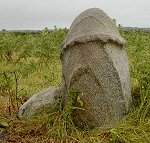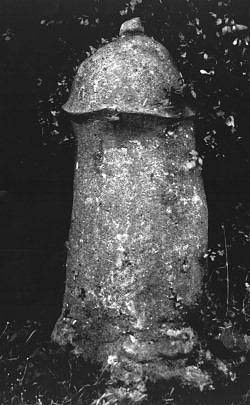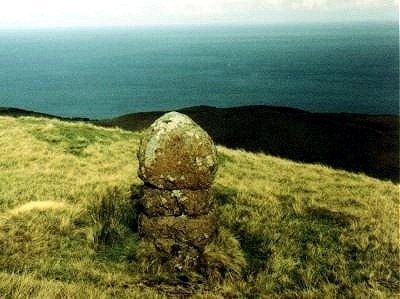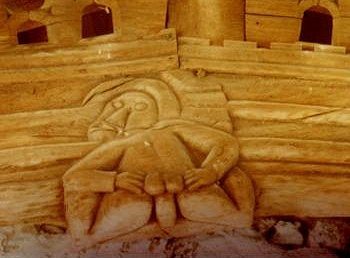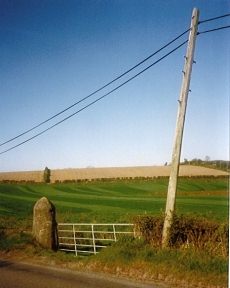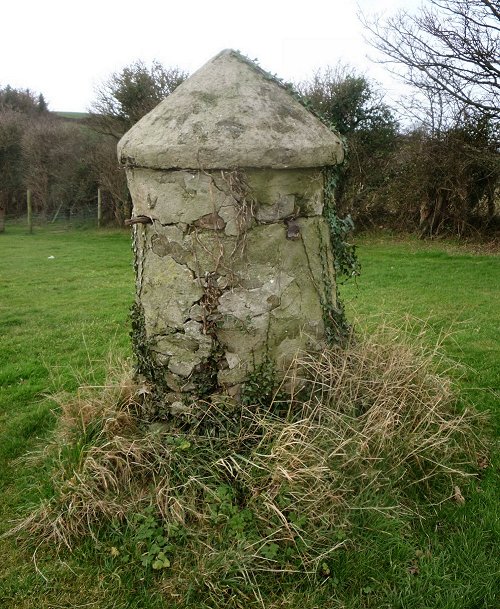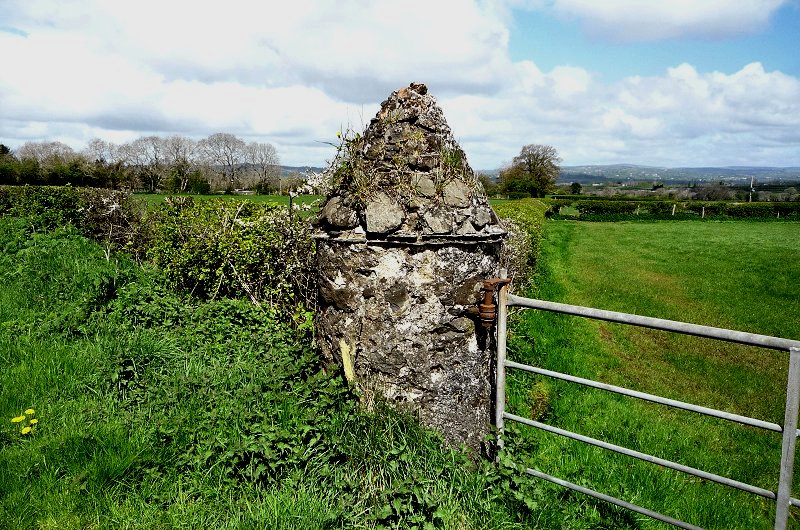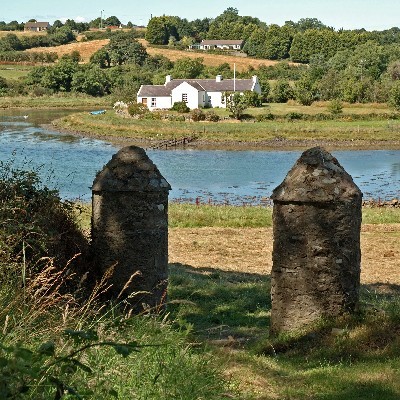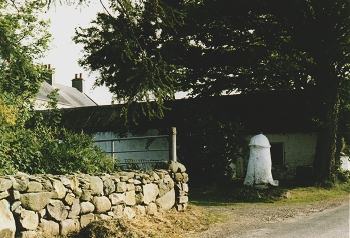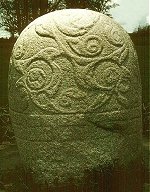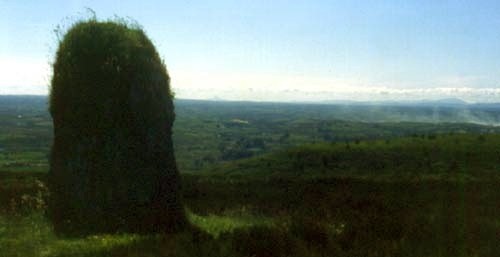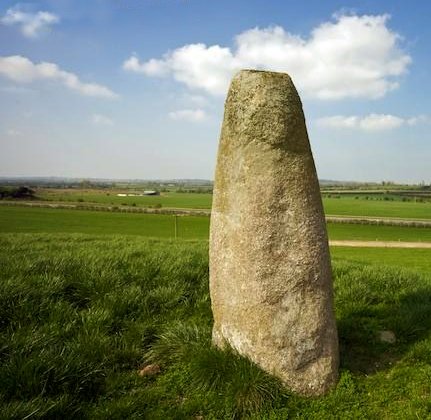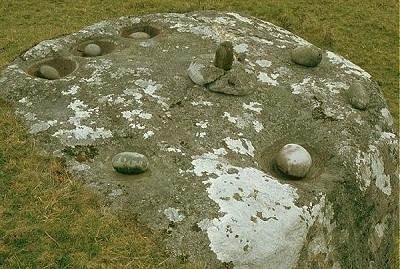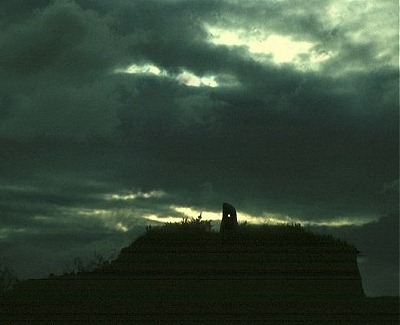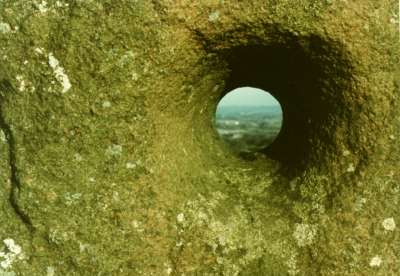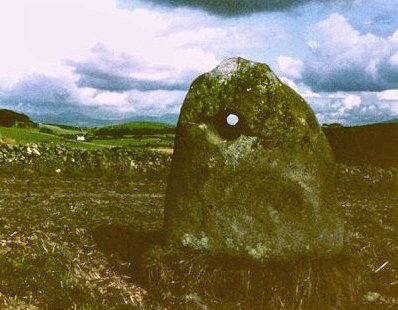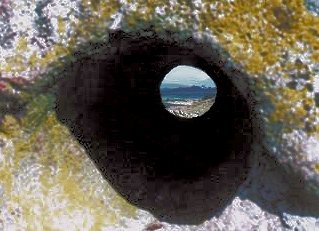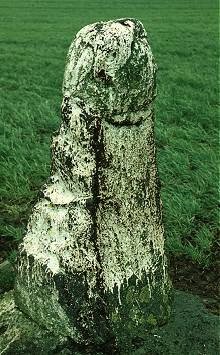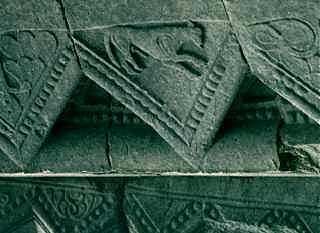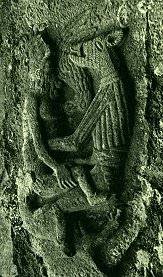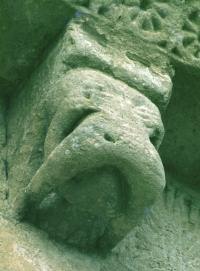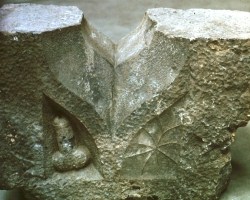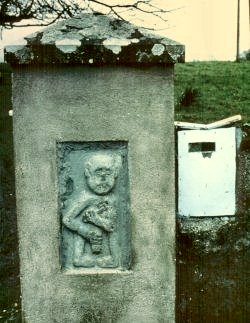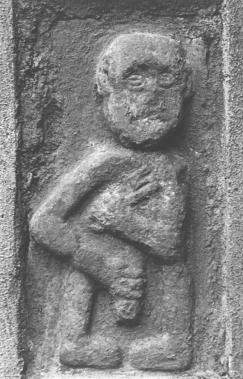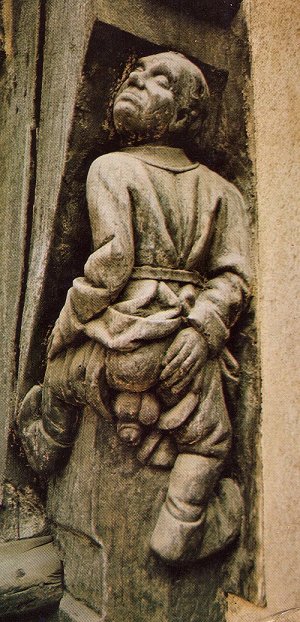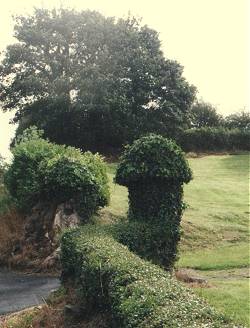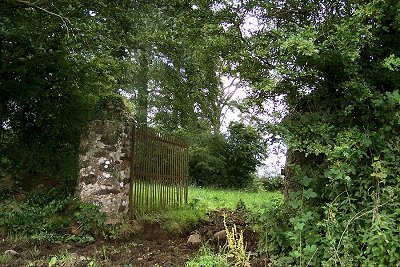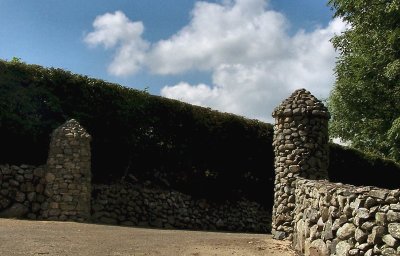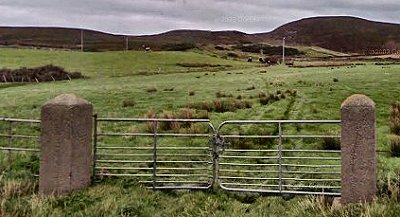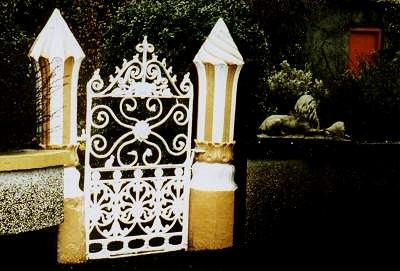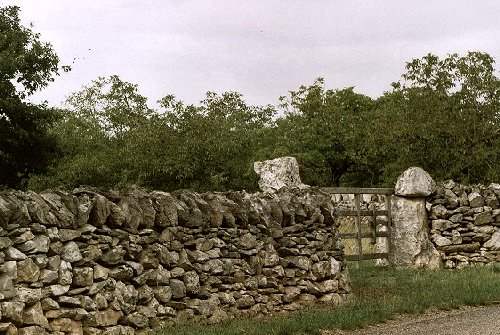
|
|
stone
forts, crannógs & souterrains
the
earth-mother's
lamentation
east of brittany:
megaliths of western and southern france
The Irish fondness for phallic pillars suggests something about Irish (indeed, almost universal) attitudes to fertility and male power, but nothing about Celtic sexual tastes or preferences.
For these, the only source is the first century BC Greek historian and commentator Diodorus Siculus. Amplifying Aristotle's comments on Celtic male-on-male practices within the warrior class, he wrote:-
'The men are much more sexually interested in each other than in women; they lie around on animal skins and have full pleasure with a lover on either side of them. The extraordinary thing is that they haven't the smallest regard for their personal dignity or self-respect; they offer themselves to other men without the least compunction. Moreover, this isn't looked down upon or regarded as in any way disgraceful: on the contrary, if one is rejected by another to whom he has offered himself, he takes offence.'
Such philadelphic practices are also suggested in the Irish saga Táin Bó Cuailgne ('The Cattle-Raid of Cooley'), in which the hero Cú Chulainn explains that he does not want to fight his foster-brother and former buddy Ferdia:
Firm friends,
companions in the forest, we made one bed and slept one sleep in enemy
lands after the fight.
This
page
is included on the
See
an extraordinary
modern homage
to
the psychological power
(through artistic decoration)
of the phallus.
|
The penetrating psychological insights of Jung and Freud have demonstrated that the phallus is a powerful and polyvalent symbol of power, productivity, dynasty, violence, creativity, potency, filthiness, lust, strength, receptitude, threat, 'The Big Stick', apotropy, endurance, the self, etc. Jung also pointed out that universal symbols like the phallus have a way of surfacing willy-nilly, whether in dreams, fantasies, repugnance, or in artefacts. The choicest example of the latter occurred in Victorian Britain. At a time when tables were heavily draped lest anyone see their groins, when the most savage interdictions (some still surviving) were imposed on anything connected with natural sexual curiosity, Victorian tables were adorned with the most outrageously phallic salt and pepper pots. Squalid Victorian towns and cities were crowned with phallic domes and minarets. Christian
fear and hatred of the phallus had tended to breed phallomania
(in the form of obsession with 'indecent exposure'), phallocracy
(the priesthood) and phallocentrism. Salvador Dali wrote: 'Revulsion
is the sentinel at the door to our deepest desires'.
And so it was in Victorian times that the Irish 'Sheela-na-gigs'
suffered from the manic attentions of puritans, just as similar
carvings in England had been smashed in the time of Cromwell.
In England a higher proportion of male exhibitionists was hacked
from churches than female ones. Phallic stone, Ballygilbert,
county Antrim
The
Roman Empire incorporated many cults which celebrated male energy
- Orphic, Dionysiac and Panic. So, at one time, say near the
end of the Roman period, Britain must have had rampant penises
everywhere - from multi-phalliform lamps to marble herms (man-
sized pillars with a carved bearded head on top and an erect
penis stick out a third- to half- way up); from low-reliefs
of penises scattered -as in Pompeii and Herculaneum - apparently
at random, to large menhirs; from bronze age cult-figures of
wooden warriors with large detachable quartzite penises (quartzite
pebbles are to be found at many an Irish site, along with phalliform
ogham stones and pillars), to penis-and-vulva graffiti, to phallic
stones inside Cornish stone circles. Examples of all these have
survived in Britain, together with some carvings associated
with churches: the 'Abson
Man' crawling in megaphallic lust: for example the naked
and handsomely-endowed male swallowed by the jaws of hell on
a capital in St Peter's, Northampton; the crude ithyphallic
gargoyle (from which rainwater poured through his large, displayed
anus) from Margam
Abbey near Swansea. Carving on roof-beam, Queniborough,
Leicestershire - Ireland, on the other hand, a country which sees itself today as a centre of Celtic tradition but which was mostly on the periphery, and a country which did not receive all the eclectic influences of the Roman Empire (and thus probably had fewer, or a smaller repository of, phallic figures and monuments) is still littered with phallic monuments, amongst which the least appreciated are the remarkably suggestive gateposts of Ulster.
Typical Ulster gateposts - near Downpatrick, county Down
That mere entrances to fields and small laneways should have such massive pillars is another Jungian quirk in the psychopathology of Northern Ireland - for these cement-rendered or whitewashed gateposts, up to a yard in diameter with glandiform, conical caps (some quite phallic) are a conflation of two Celtic - or perhaps indeed pre-Celtic - monuments: the phallic boundary marker (of which the herm is a type), and the pairs of pillar-stones which were a magical agent whereby the fertility of beasts was ensured by driving them between such (usually phalliform or male-and-female) stones. Pairs of pillar-stones (as opposed to the rubble-constructed Ulster gateposts) are found elsewhere in Ireland, in Britain, and, of course, in Europe.
Gibb's Island, county Down Farm gatepost, Maghera, county Down Some have little capstones placed or cemented on top of them (ironically reminiscent of little crosses stuck on massive phallic menhirs in Brittany to render them christian and 'safe', just as many Irish phallic stones were christianised many centuries earlier), and this may be a symbolic representation of semen, as has been the plausible interpretation of the meander- design on the glans of Ireland's most splendid phallic pillar, the Turoe Stone - a stubby granite penis some three feet high, with a Greek Key pattern to mark the fold in the foreskin. It may have stood at a ceremonial site of the first century BC, which was later enclosed and known as The Rath of Feerwore ('the big men'). It is the finest example in Ireland of an array of phallic stones ranging from a few inches to several feet in height. A wilder example occurs on the south flank of the Bricklieve Mountains of Sligo, not far from the Carrowkeel-Keashcorran passage-tombs.
Known as "The Dagda's Stone" after a priapic Irish creator/fertility god, and by some as "The Dagda's Dick", it surveys a wedge-tomb and a glacial erratic rocking-stone known as "The Stirring Rock" which was the scene of Lammas fertility-festivities on "Bilberry Sunday" up to the beginning of the twentieth century. Even more impressive - in miniature - is a stone behind the stump of a Round Tower at Ardrahan in county Galway. click
on the thumbnail for a larger picture Some of the prehistoric stones are obviously-phallic only from one side, but this does not diminish the impression they can make. A fine example is at Crobane in county Down. click
on the thumbnail for a larger picture
Another
very phallic stone, not far away in the same county, is one
of a pair (see
below) - the other being flat-topped and 'female'. Even more realistic is this proud example at Kilgowan in county Kildare.
Bullauns (artificial hemispherical hollows in rocks or boulders) have never been fully 'explained'. It has been suggested that they served as mortars for herbal potions. The sexual symbol of pestle and mortar is universal - and where you find female symbols you often find a complementary male one, and vice versa. A fine multiple-bullaun with a small phallic stone placed in a circular perforated stone base an be seen at Feaghna in Kerry. Bullauns are almost always associated with christian(ised) sites, but almost certainly predate them. Mostly they are of the single or double type, and often have spheroid 'turning stones' with which to effect magic or cures, or to honour a divinity-turned-saint, by saying a prayer while turning them. These would be no use a pestles, and may have replaced phalloid stones which were carried off - rather as some of the smaller cross-slabs from sacred sites have journeyed back and forth across the Atlantic to heal dying migrants and their descendants. The large phallic pillars occur all over Ireland, sometimes christianised: at Tara the Lia Fáil (Stone of Destiny) competes for attention with a hideous and intrusive concrete effigy of St Patrick. At another important cult site, Emáin Macha (Navan Fort) the sacred centre was a phallic pillar of wood.
Multiple bullaun, Feaghna, county Kerry.
Still in prehistoric times, free-standing holed stones (again not satisfactorily explained or explained away) mostly have their perforations at groin height, and of a diameter suitable for the ritual insertion of a living penis.
The Craw Stone, Crows/Crouse, Galloway
Perforated cross at Bonamargy Friary,
Ballycastle, county Antrim Prehistoric tombs had 'kennel holes' in their door- slabs; and tomb shrines, for example at Bovevagh and Tamlaghtard (Derry), Carrownaff (Donegal), Saul, (Down) and Killabuonia (Kerry) have hand holes for touching the relics of the saint, in a similar kind of sympathetic magic to that of inserting the penis in a perforated slab to attract or ensure fertility. At Aghowle church in Wicklow a very phallic stone about three feet high survived until recently, with a bullaun and a perforated slab on the same site. The phallic stone has since been smashed in typical (if latter-day) Christian insanity. Some of the holed stones have been used in living memory to cure barrenness in livestock or in people (by passing a garment through the hole) - a function also enjoyed by some of the phallic pillars. One of these, with the Jungian title of 'The White Wife' at Carnalridge in Co. Derry, used to be whitewashed every year - just as the phallic gateposts were, and just as some other phalliform stone in north-east Ireland continue to be painted orange in the month of July. 'The White Wife' is phallic, but from one side looks like a bent old woman - but it is not called 'The White Widow' or 'The White Hag'.
The White Wife, Carnalridge, county Antrim At the other end of the country, at Coolineagh in Cork, an ogham pillar is crowned with a lump of quartzite known as Caipín Ólann (St Olann's Cap). Originally there were two superimposed stones but because of the phallic character and popularity of the pillar as a cure stone for barrenness, a local priest removed them. They were soon replaced by the present caipín (or a predecessor). Small capstones occur on the Ulster gateposts (see above) and larger, phallic ones (some removed) were tenoned to the tops of the carved crosses of Western Ossory. Sometimes paired pillar stones are quite obviously male and female (the latter with grooving on the top). Fine examples are at Moneyslane (Down), Boherboy (Dublin), Rathglass (Carlow), Tulnacross and Sandville (Tyrone). Both phallus and vulva occur together at Boa Island (Fermanagh), where a famous 'double Hermes' torso (two back-to-back figures) is gouged female on one side, with a phallus carved in relief on the other. This site was evidently yet another sanctuary of great importance, and is still a place of powerful atmosphere.
It is not until the Romanesque period (12th century) that whole figures with realistic genitals start to appear in Ireland. These generally represent the sin of Concupiscentia (lust, lasciviousness, lubriciousness, licentiousness), and one of the earliest occurs in an Irish-influenced Anglo-Saxon manuscript now in the Vatican. In a 'Canon Table' or list of textual concordances, a rather monkish male figure pulls his beard and indicates his genitals, which are being attacked by snakes, as is his moustache. He is being eternally tortured in Hell for one or all of the sins of Lust (Irregular Motions of the Flesh, etc.) and the snakes attack not only his genitals but his secondary sexual characteristics. Later female figures of Luxuria (the spending of wealth on luxury) have their expensive hairpieces and their breasts similarly attacked, more often than their genitals. There are large numbers of male and female exhibitionists (some depicted as committing their sin, others as suffering for their sin, some also committing other sins such as Drunkenness and Unnatural Acts from contortionism to male-in-male sodomy) on Romanesque corbels and capitals, especially in France. It is not surprising, therefore, that coital and phallic carvings, masquerading as Sin, should survive among the Romanesque and mediæval ruins of Ireland. On a window of a twelfth-century church at Annaghdown (Galway) a fine ithyphallic dog (symbol of lust and abandon) can be seen. Detail of archivolt, Annaghdown, county Galway A remarkable fifteenth-century carving now built into Kilkea Castle (Kildare) shows a bearded and phallic-helmeted man straddling and being gripped by an ithyphallic man in a boar mask, or a boar-man, while being gnawed from behind by an ithyphallic quadruped and having a bird attack his breast. This may be a unique representation of the Temptation of St Anthony, in which the boar-figure is reminiscent of theriomorphic or masked men on the crosses at Castledermot in the same county.
Kilkea Castle, county Kildare
Corbels at Saint-Martin-de-Sescas (left)
and Grey Abbey (right)
In the same French 'school' is the window-top from Tomregon (Cavan) which shows a bearded, torso-less figure from behind, displaying scrotum but no penis, his long arms being pulled by monsters. This figure has clear affinities with grotesque capitals in the Loire Valley, notably Cunault. A later mediæval window-top from the sixteenth century Smithstown castle (Clare) is decorated with a curious 'spider web' design and a well-observed penis and scrotum. This recalls similar images of male concupiscence on corbels of churches in Western France. A human figure carved on a gate post at Ballycloghduff (Westmeath) brandishes a key in one hand and a huge penis with the other.
A similar figure (interpreted as St Peter and equally undateable) survives only from the waist up at Broadford in Co. Clare. Are these palimpsests? Do they convey the message that sexual control will provide the key to Heaven ? Or are they more in the spirit of this sophisticated 15th century (lampoon ?) in Angers (France) ?
Although their 'meaning' may range from potency to sin, and may be ambiguous or downright obscure, phallic symbols and images are universal, and they survive universally, whether or not they are consciously seen as phallic. Just as an English female exhibitionist figure was pointed out to visitors as 'the last man hanged on Hangman's Hill', so the Smithstown Castle carving was wilfully interpreted (turned upside down) as a mason's mallet.
Ulster people pass their remarkable and fast-disappearing gateposts daily without consciously noticing their phallic (and fungoid) caps. Any unrepressed person would recognise some holed stones as patently coital in significance, and the meander design on the Turoe Stone as stylised semen, but our half-repressed, sex-obsessed culture perversely refuses to see the obvious, the natural. The explicit functions of these disparate carvings were certainly different, but because we see the world in terms of obscurity, we lump them together (as I have done) - just as the British Museum and the Museum in Naples had their famous Special Collection and Gabinetto Segreto in which all 'obscene' material was placed, regardless of culture, context, function or period. Yet the phallic symbol is timeless as well as universal: it pops up in neon votive lamps, in Victorian pepper-pots, and in car and motorbike design. Since the eighteenth century, however, its recrudescence has been unconscious rather than conscious, indicating that our culture is getting more complex in its repressions.
Ivy-clad phallic gatepost, Downpatrick, county Down
An impressive pair of gateposts at Camlin Old Church, county Antrim.
And while old Ulster gateposts are disappearing as farm machinery makes increasing demands, some of the more grandiose (if bungaloid) dwellings in the North have renewed the tradition with enormous (sometimes grotesque) modern versions.
click for a full description of these remarkable gateposts
Postscript While there is something of a renaissance in phallic gate-posts at least in the north-east of Ireland, the picture above shows a Victorian pair in Newtownards, county Down, which was 'bowdlerised' by truncation when the big house was razed to make way for a modern Nursing Home. I have 'restored' the pillar on the left to show what the gateposts were originally like. Note that the tradition of whitewashing phallic pillars survives even on truncated examples. The example below is a rare rococo or ice-cream specimen near Toomebridge in county Antrim.
Phallic
gateposts also occur elsewhere, of course,
See an extraordinary modern homage to
the psychological power
Dissident Editions: phallic poems
FURTHER READING: Landscapes of Desire: revealing Britain's
Sexually-inspired Sites - a book which actually epigraphs one of
its chapters with a quotation from this web-page.
|
Click here to download the PDF of this page.


